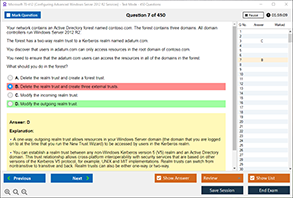Introduction to the Scrum PSM-I Exam
The Scrum PSM-I exam is designed to test your knowledge of the Scrum framework as outlined in the Scrum Guide. It consists of 80 multiple-choice questions that must be completed within 60 minutes. To pass, you need to score at least 85%, which underscores the importance of thorough preparation.
The exam covers a wide range of topics, including Scrum theory, roles, events, artifacts, and the rules that bind them together. One of the most critical areas of focus is the Scrum team structure, which forms the backbone of any successful Scrum implementation. Understanding how Scrum teams are organized, their optimal size, and the dynamics between team members is essential for both the exam and real-world applications.
Definition of Scrum PSM-I Exam
The PSM-I exam is a rigorous assessment that evaluates your ability to apply Scrum principles in various scenarios. It is not just a test of theoretical knowledge but also your practical understanding of how Scrum works in real-world situations. The exam questions are designed to challenge your critical thinking and decision-making skills, ensuring that you can effectively serve as a Scrum Master in any organization.
To excel in the exam, you must have a clear understanding of the Scrum framework, including the roles of the Scrum Master, Product Owner, and Development Team. Additionally, you need to be familiar with Scrum events (such as Sprint Planning, Daily Scrum, Sprint Review, and Sprint Retrospective) and artifacts (such as the Product Backlog, Sprint Backlog, and Increment).
Understanding the Scrum Team Structure
At the heart of the Scrum framework is the Scrum team, a self-organizing and cross-functional group of individuals responsible for delivering a potentially releasable Increment of product at the end of each Sprint. The Scrum team consists of three primary roles:
- Scrum Master: The Scrum Master is a servant-leader who ensures that the team adheres to Scrum principles and practices. They facilitate Scrum events, remove impediments, and foster an environment of continuous improvement.
- Product Owner: The Product Owner is responsible for maximizing the value of the product by managing the Product Backlog. They prioritize tasks, define user stories, and ensure that the team is working on the most valuable features.
- Development Team: The Development Team consists of professionals who do the work of delivering a potentially releasable Increment of product at the end of each Sprint. They are self-organizing and cross-functional, meaning they have all the skills necessary to create the product Increment without relying on external teams.
The Scrum team is designed to be small and cohesive, typically comprising 3 to 9 members. This size is optimal for maintaining effective communication, collaboration, and productivity. Larger teams can lead to inefficiencies, while smaller teams may lack the necessary skills to deliver a complete Increment.
Factors Influencing Team Size in Real-World Scenarios
While the Scrum Guide recommends a team size of 3 to 9 members, real-world scenarios often present challenges that can influence team size. Understanding these factors is crucial for both the PSM-I exam and practical applications of Scrum. Here are some key considerations:
- Complexity of the Project: Complex projects may require a larger team with diverse skill sets to handle various aspects of the product. However, it’s essential to balance size with the need for effective communication and collaboration.
- Team Expertise: The experience and expertise of team members can impact team size. A highly skilled team may accomplish more with fewer members, while a less experienced team may require additional members to cover skill gaps.
- Organizational Constraints: Organizational policies, budget constraints, and resource availability can influence team size. In some cases, organizations may not have the resources to form an ideal Scrum team, requiring adjustments to team size and structure.
- Communication Overhead: As team size increases, so does the complexity of communication. Larger teams may struggle with coordination, leading to delays and inefficiencies. It’s essential to strike a balance between team size and communication overhead.
- Team Dynamics: The interpersonal dynamics of the team can also impact its size. A cohesive team with strong collaboration skills may function well with more members, while a team with communication challenges may need to be smaller.
Common Mistakes in Answering Exam Questions on Team Size
One of the most challenging aspects of the PSM-I exam is answering questions related to team size. Many candidates make common mistakes that can cost them valuable points. Here are some pitfalls to avoid:
- Ignoring the Scrum Guide Recommendations: The Scrum Guide clearly states that the ideal team size is 3 to 9 members. Ignoring this recommendation and choosing an answer that falls outside this range is a common mistake.
- Overlooking Real-World Constraints: While the Scrum Guide provides guidelines, real-world scenarios often present constraints that can influence team size. Candidates must consider these factors when answering exam questions.
- Focusing Solely on Numbers: Team size is not just about numbers; it’s also about the team’s ability to collaborate and deliver value. Candidates should consider the quality of interactions and the team’s overall effectiveness when answering questions.
- Misinterpreting Cross-Functionality: A common misconception is that a larger team is necessary to achieve cross-functionality. However, cross-functionality is about having the right mix of skills, not necessarily a large number of team members.
- Neglecting Communication Overhead: Candidates often overlook the impact of communication overhead on team size. Larger teams may struggle with coordination, leading to inefficiencies that can affect productivity.
Conclusion
The Scrum PSM-I exam is a challenging but rewarding assessment that tests your understanding of the Scrum framework and its practical applications. A key area of focus is the Scrum team structure, including the optimal team size and the factors that influence it in real-world scenarios. By understanding these concepts and avoiding common mistakes, you can improve your chances of passing the exam and becoming a certified Scrum Master.
Preparing for the PSM-I exam requires more than just memorizing the Scrum Guide; it demands a deep understanding of how Scrum principles apply in various contexts. By mastering the Scrum team structure, recognizing the factors that influence team size, and avoiding common pitfalls, you’ll be well on your way to achieving PSM-I certification and excelling in your Agile career.
Remember, the journey to becoming a Scrum Master is not just about passing an exam; it’s about embracing the Agile mindset and fostering a culture of collaboration, continuous improvement, and value delivery. With the right preparation and mindset, you can unlock the full potential of Scrum and drive success in your organization.
Special Discount: Offer Valid For Limited Time “PSM-I Exam” Order Now!
Sample Questions for Scrum PSM-I Dumps
Actual exam question from Scrum PSM-I Exam.
How large should a Scrum team ideally be?
A) 1-3 members
B) 3-9 members
C) 10-15 members
D) More than 20 members


